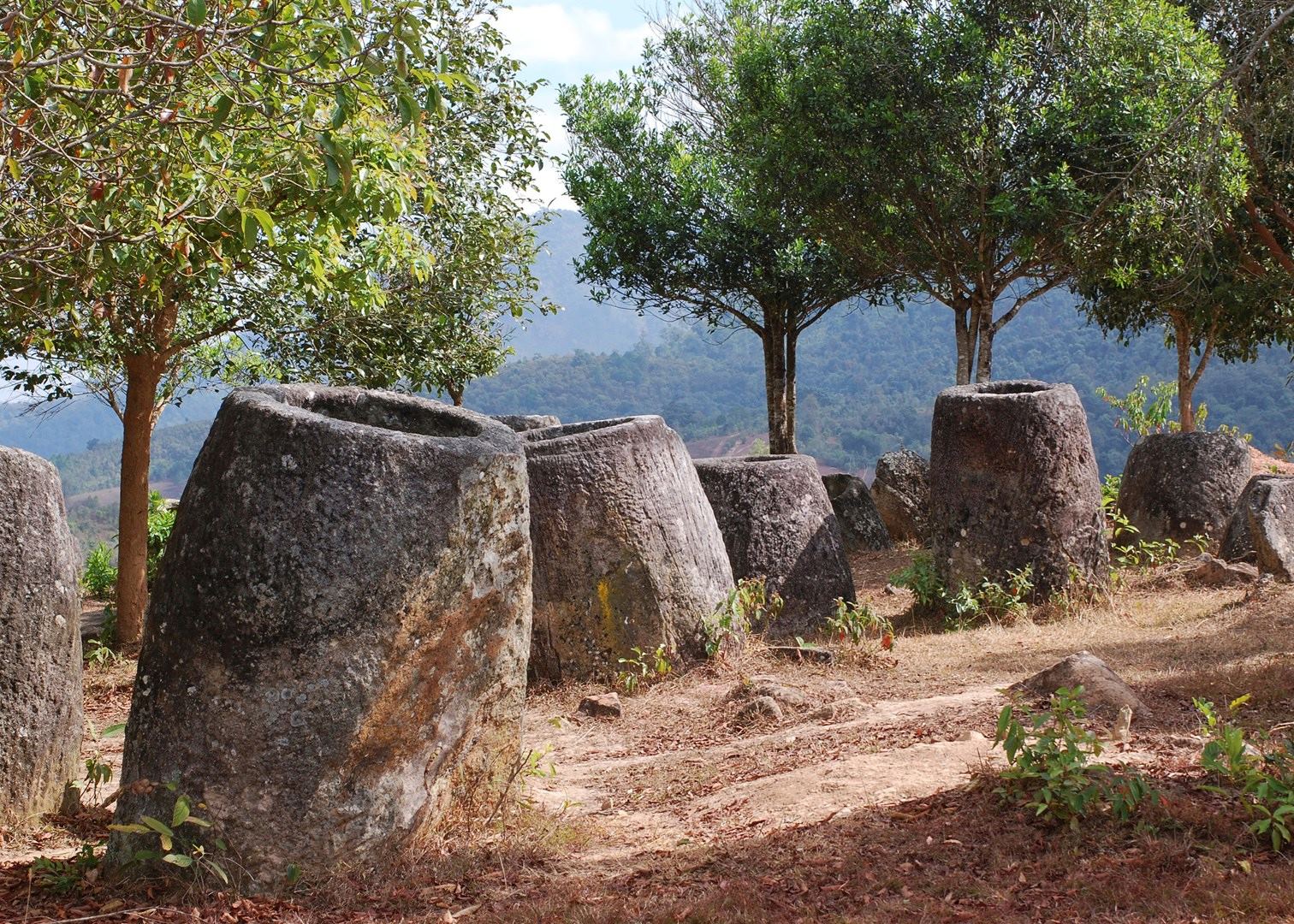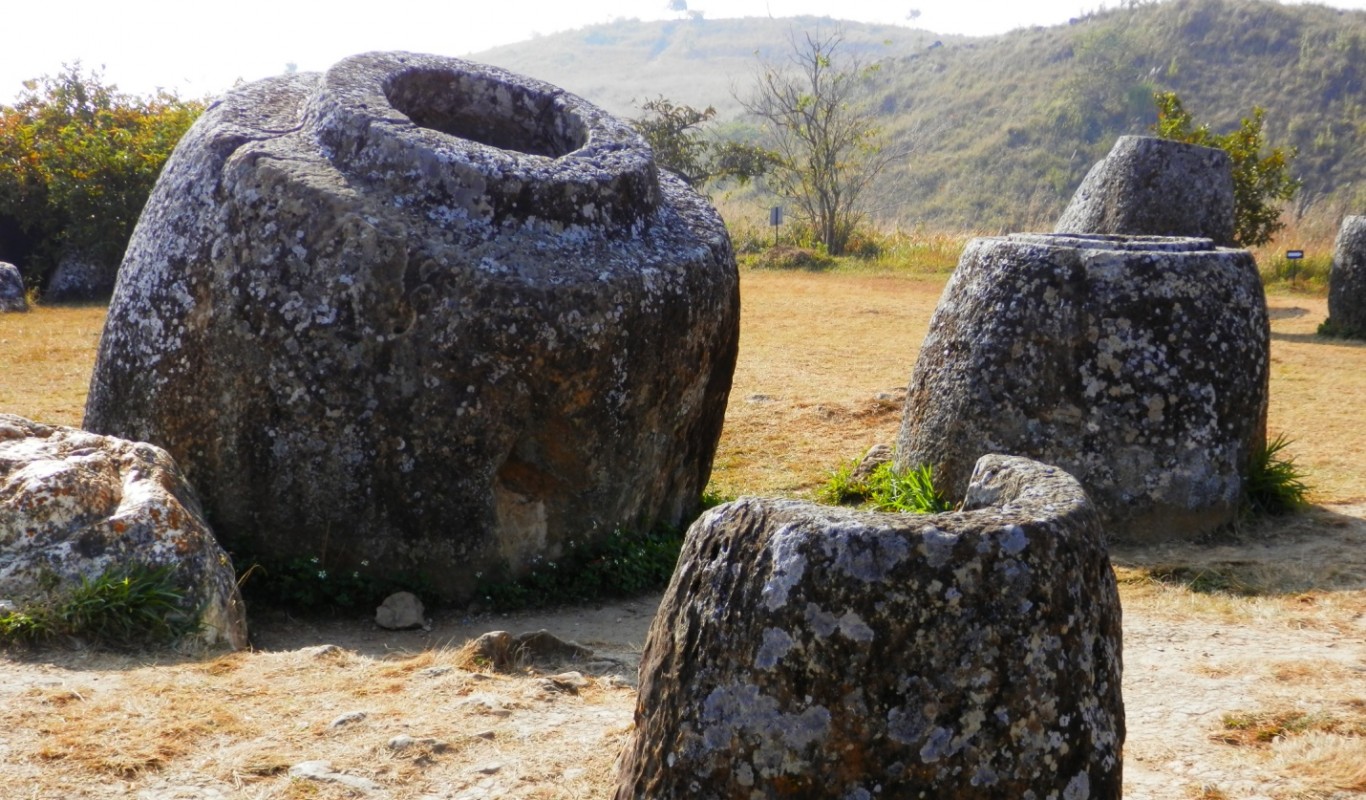In this remote corner of a mid-sized town 400km north of the Lao capital, Vientiane, travellers would find fields of ancient stone jars.
Questions might be lingering in everyone’s mind of what were they for and who put them there.

Shrouded in mystery and myth, this bizarre and ancient site is a bizarre collection of ancient cylinders scattered in their hundreds across the war-scarred countryside of northern Laos's Xieng Khuang province.
It is also famously known as one of Southeast Asia’s most mysterious and misunderstood prehistoric places
They're believed to have been created by travelling Indian tribes more than 2000 years ago and many have opined that they're an Asian version of Stonehenge – only smaller and with far fewer tourists.

Around 90 sites scattered across miles of rolling landscape contain thousands of large stone jars, each weighing several tons.
Despite the best efforts of archaeologists, the origin and reason for the Plain of Jars remains a mystery.
The vibe around the Plain of Jars is eerie and somber, comparable to the same feeling people report at Stonehenge.
According to Steve McKenna who wrote for Traveller AU portal said local legend claimed they were made of congealed water-buffalo skin so they could store rice and lao-lao (Laos's rice whisky) for a giant who lived nearby.
He added that French archaeologist Madeleine Colani, visiting in the 1930s, established that most were crafted from sandstone (after all, they weigh up to a tonne each) and were probably used for ancient funeral ceremonies.
Colani found a human-shaped bronzed figure carved into one urn and, nearby, a scattering of tiny stone beads, but the lack of organic materials inside the jars, notably bones, has compounded their enigma.

The picturesque, serene landscape of the Plain of Jars may seem inviting, but before wandering off to explore first consider that Laos is the most bombed country in the world; an estimated 30 percent of all the munitions dropped remain unexploded and still deadly.
Always stay on marked, well-worn paths when walking between jar sites, the Tripsavvy.com reported.
While walking through the site, look out for these artefacts and special attractions:
1. Stone jars broken apart by shock waves caused by carpet bombing in the 1960s.
2. Stone disks on the ground used as burial markers.
3. Shells, fighting positions, destroyed tanks, and other war scrap left behind.
4. "Craters" restaurant and the Mines Advisory Group shop located nearby in Phonsavan.

Visiting the Jar Sites at the Plain of Jars, however, is always welcomed for the tourists. There are 90 jar sites have been declared safe enough to visit: Site 1, Site 2, Site 3, Site 16, Site 23, Site 25, and Site 52.
1. Site 1 is closest to town and receives the most visitors, but is not the best representation of the Plain of Jars.
2. Site 2 is accessible from Site 1 by motorbike or tuk-tuk and then Site 3 can be reached by an easy hike.
3. Site 52, the largest known site containing 392 jars, is rarely visited and can only be reached by foot. Always stay on the signed paths when walking between jar sites.
Now, do you already feel the thrill to have a look at the jars yourself?
Plan and get yourself on board to Laos, peeps!
Source :Tripsavvy.com and Traveller AU



















